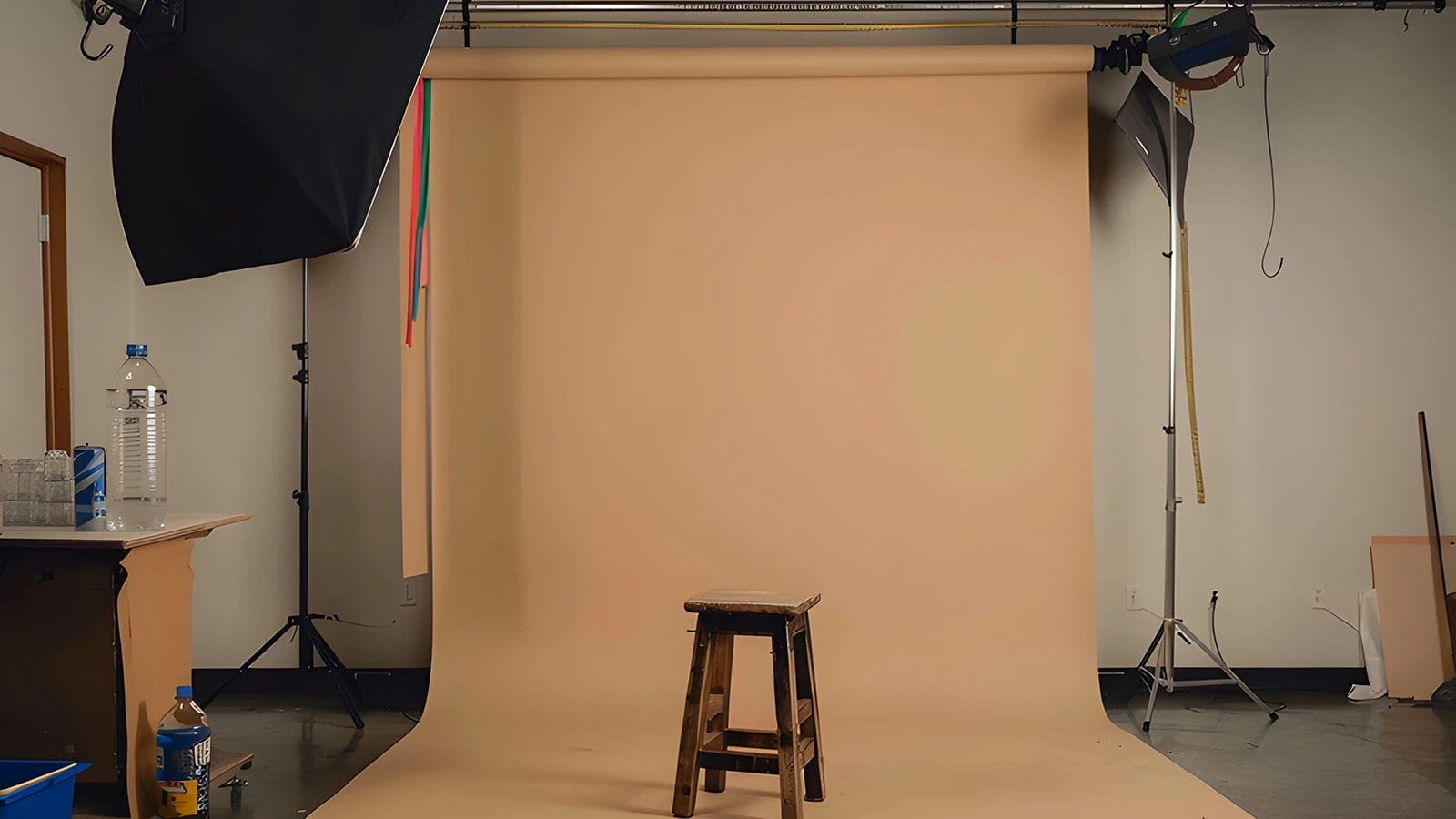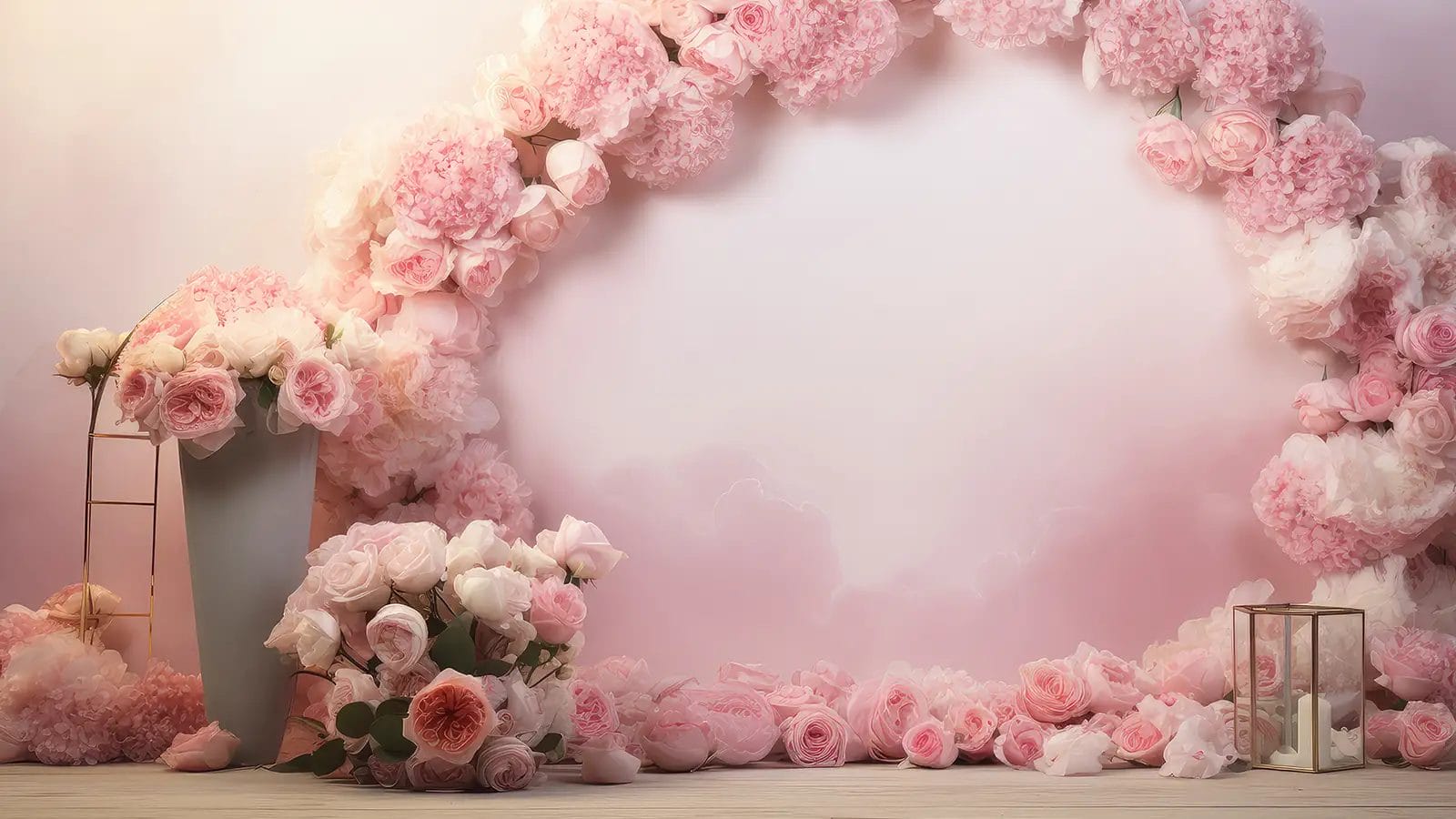
Meticulous attention to detail is critical when striving to make a backdrop appear real. From selecting the appropriate material to mastering the interplay of lighting, every element plays a vital role in achieving authenticity.
By delving into the techniques we provide, you can elevate the visual impact of your backdrop. Are you curious to uncover more insights on transforming a mere backdrop into a convincing setting? Let's explore the nuances that can truly bring your scenes to life!
Key Takeaways for How to Make a Backdrop Look Real
- Proper lighting matching the subject and backdrop is essential.
- Use high-resolution images for clarity and detail.
- Pay attention to color matching for realism.
- Incorporate depth and dimension with props and layers.
- Ensure the backdrop setup is wrinkle-free and secure.
Factors to Consider When Choosing Material
Consider materials like muslin fabric, canvas, or vinyl when aiming for a realistic backdrop appearance that seamlessly integrates with your main subject through consistent lighting. Opt for a white backdrop to achieve a seamless look, and choose a material with a matte finish to prevent reflections and glare.
Prioritize wrinkle-resistant materials to maintain a smooth backdrop surface. Selecting a durable and easy-to-clean material will ensure long-lasting use for various shooting scenarios.
Pay attention to the texture and thickness of the material used in your photographs to create an authentic and visually appealing backdrop.
Ensuring Proper Lighting
Remember that lighting is vital in achieving authenticity when creating a realistic backdrop.
Ensure the lighting complements the main subject and matches the scene's ambiance.
How lighting affects the appearance of a backdrop
Proper lighting plays a critical role in transforming the appearance of a backdrop. It ensures a seamless integration with the main subject in the image.
Ensure consistent lighting across both the backdrop and the subject. This helps remove shadows, creating a realistic scene.
Experiment with different lighting angles. Doing so can reduce harsh shadows, creating a more natural environment.
Using adjustable lights provides flexibility in controlling the intensity and direction of the lighting. This can enhance the backdrop's realism.
Matching the lighting on the subject with the backdrop through the use of colored gels further enhances the cohesive visual effect.
Consider strategically using a combination of natural and artificial lighting sources. Use windows for soft, realistic lighting in photography. Position artificial lights to imitate natural light angles and shadows, enhancing the backdrop's authenticity.
Experiment with different light temperatures to match the ambient lighting for added realism. Avoid harsh lighting that can create unnatural shadows, opting for softer, diffused lighting.
Setting Up the Backdrop Properly
Make sure the backdrop is smooth and free of wrinkles before setting it up. This ensures a professional and polished look in your images. To achieve a seamless backdrop, steam or iron out any wrinkles and use clamps or tape to secure it in place during the shoot.
Position the backdrop at a suitable distance from your subject to avoid unwanted shadows and maintain a seamless appearance. Select a backdrop material that complements the desired effect. Consider factors like texture and color to enhance the realism of your background.
A seamless backdrop with the right color and texture creates a visually appealing and believable setting for your subject.
Adding Depth and Dimension
To enhance the realism of your backdrop, incorporate techniques that add depth and dimensionality to the overall composition.
To make the background look realistic, focus on adjusting shadows and highlights to match the lighting of the main subject.
Experiment with different depths of field to add depth to the scene. Use perspective tricks like forced depth to create a three-dimensional illusion.
Incorporate leading lines to guide the viewer's eye, creating a sense of dimension.
Adding layers to the backdrop with props or textures can enhance depth perception.
Consider the focal point's interaction with the background to further enhance the sense of depth and dimensionality in your composite image.
Using High-Resolution Images
Another tip for achieving a realistic backdrop is to opt for high-resolution images. High-resolution images offer more detail and clarity. They enhance the seamless integration of your backdrop for a realistic look.
With higher resolution, the blending between your subject and the backdrop becomes smoother, giving your work a professional finish. These quality images prevent pixelation or distortion, preserve the integrity of the backdrop, and ensure a polished appearance.
Practice Color Matching
To achieve realistic backdrops, ensure you practice precise color-matching techniques. Use color swatches or color-matching tools to match the backdrop color with the subject.
Adjust the white balance on your camera to capture the true colors of the backdrop and prevent color casts. Consider the color temperature of the lighting to maintain consistency and realism.
Experiment with different color tones and shades. Find the perfect match for a natural look. Check the color consistency between various elements to ensure a seamless integration.
Post-Production Enhancements
To enhance the realism of your backdrop, you can use photo editing tools like Adobe Photoshop. Adjusting the lighting, shadows, and highlights allows you to achieve a cohesive look that matches your subject's lighting.
Use blending techniques to seamlessly integrate the subject into the backdrop. Pay attention to details like reflections and shadows to enhance authenticity.
Experiment with different filters and effects to refine the appearance of your backdrop further. With careful adjustments to lighting and shadows in post-production, you can create a seamless and realistic backdrop that adds depth and authenticity to your final image while complementing your main subject.
Conclusion
In conclusion, mastering these techniques can make your backdrop look incredibly realistic. Proper setup, adding depth and dimension, high-resolution images, practicing color matching, and post-production enhancements will create a professional and realistic backdrop for your photos or videos.
Keep honing your skills and experimenting with different techniques to achieve the desired effect.



